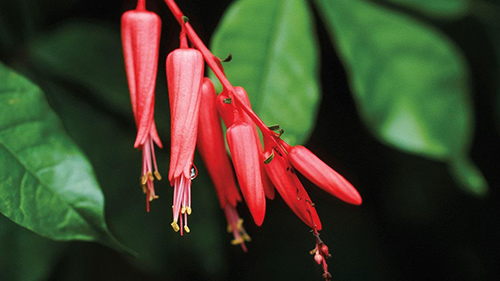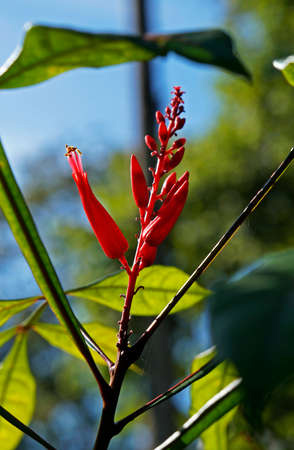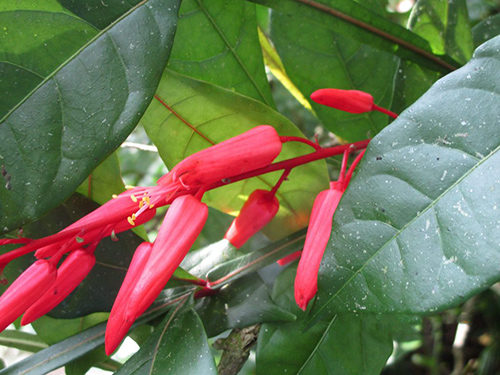Contents
The quassia plant gets its name from Quassi, a Guyanese native slave who, in 1756, revealed his secret for healing fever to a Dutch officer who protected him. The secret was this plant, which is a Guyanese shrub.

Quassia Plant Scientific Facts
- Other names: Bitter ash, bitter wood.
- French: Quassie-amere.
- Spanish: Cuasia.
- Environment: It grows wild and is cultivated in the West Indies, Guyana, Suriname, and tropical regions of Central America.
- Description: Shrub or tree of the Simaroubaceae family, with large red flowers growing in terminal clusters.
- Parts of the plant used medicinally: The bark of the trunk and the root.
Healing Properties and Warning

The plant contains resin, mucilage, pectin, tannin, and an alkaloid called quassine, with a bitter flavor. This is the most crucial active component to which the plant owes its properties and indications.
- Stomachic invigorator, digestive, and appetizer: It increases gastric juice secretion and promotes the gall bladder’s functioning.
- Febrifuge: This plant is beneficial in treating tropical fever.
- Vermifuge: When applied as an enema, it eliminates Oxyuridae (parasites) usually located in the anus and rectum, where orally taken medicines cannot act.
WARNING! In high doses, this plant can produce vomiting. It should be avoided in the case of gastroduodenal ulcers and during menstruation (it provokes uterine colic).
Killing roundworms is one of the primary values of quassia. If taken as an enema, it can kill pinworms. In addition, an infusion of quassia wood can treat dyspepsia, rheumatism, and fever. A bitter tonic for stomach ailments can be made by leaving water overnight in a glass cup of many quassia wood chips or in a cup made of quassia wood, resulting in a weak infusion that in a drink will help strengthen the stomach. Quassia tea is also believed to lessen the appetite for alcohol. In external applications, the plant can be used to rinse the scalp to treat dandruff.
Jamaica Quassia

After discovering the quassia amara, another similar tree was found in Jamaica with the same healing properties, however, more potent. This tree was called Jamaican Quassia (Picraena excelsa L.).
How to use Quassia
- Decoction of the cold extract with 5-10g of bark and/or wood per liter of water. Drink a cup before each meal.
- Enema: With the same decoction used internally, apply an enema once a day as a vermifuge.
Infusion: Steep one teaspoon of quassia wood in one cup of water and take one cup a day. Tincture: One dose is two to five drops.
DISCLAIMER: All content on this website is presented solely for educational and informational objectives. It would be best to not rely on the information provided as a replacement for advice, diagnosis, or treatment from a qualified medical expert. If you are pregnant, nursing, or have any preexisting medical concerns, you should talk to your doctor before using any herbal or natural medicines.
REFERENCES
- George D. Pamplona-Roger, M.D. “Encyclopedia of Medicinal Plants.” George D. Pamplona-Roger, M.D. Encyclopedia of Medicinal Plants. Ed. Francesc X. Gelabert. vols. 2 San Fernando de Henares: Editorial Safeliz, 2000. 467. Print. [quassia plant]
- Vance Ferrell Harold M. Cherne, M.D. The Natural Remedies Encyclopedia [Book]. – Altamont, TN: Harvestime Books, 2010. – Vol. Seventh Edition: 7: pp. 176.
